How to Find Off Leash Dog Trails in Washington State
You probably landed on this article because you are looking for trails in Washington where you can hike off leash with your dog.
While it may feel like you and your dog have few options, there are probably more off leash dog trails than you think.
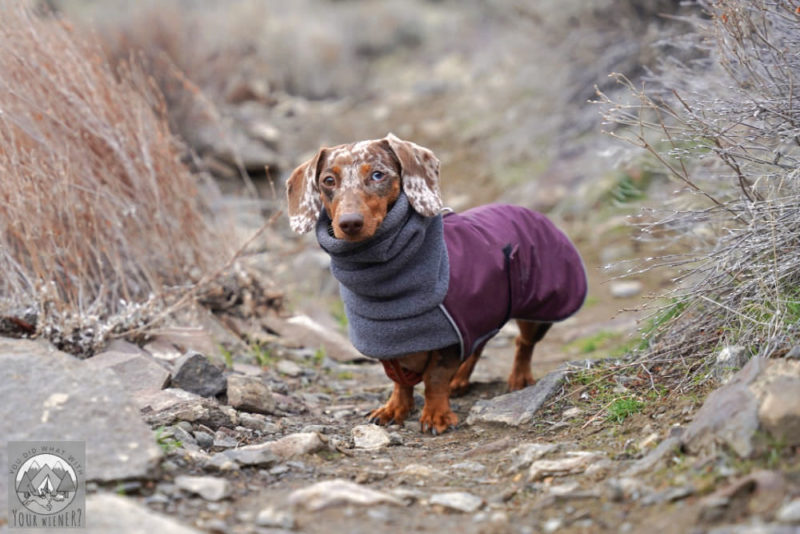
I always knew that there were off leash trails in the state but, like most, I didn’t understand exactly where it’s allowed and where it’s not.
My dog’s recall only recently became reliable, gaining her and I more freedom on the trail. Now I really do want to know exactly where we can go off leash without breaking the rules.
Since I didn’t find one clear resource on the topic, I thought I would put one together myself. I can’t be the only one who was confused.
The different rules can be very hard to keep track of and much of the information online is inconsistent, disjointed, and not complete.
For example, Washington Trails Association (WTA) and AllTrails lists if dogs are allowed on trails.
However, WTA doesn’t specify whether dogs need to be on a leash on those trails.
AllTrails takes the opposite approach and uses the standard disclaimer “Dogs are also able to use this trail but must be kept on leash” when dogs are allowed on the trail at all. The leash info is not accurate in a lot of cases (‘ve verified – I can understand why this makes the issue confusing).
I spent days researching trails where dogs are allowed to be off leash so you don’t have to.
I looked up the codified regulations for managing land entities, read pages and pages of articles, combed forums, and threw in some of my personal experience gained while hiking for over 15 years in this state with dogs, and my personal experience working on National Park and National Forest land.
Disclaimer: While I used my experience and knowledge to compile the best resource on off leash dog trails I could, rules change and I didn’t personally visit every trail in the state to verify. Also, some trails have different rules regarding dogs in winter when the trails are groomed for skiing.
Off Leash Trail Etiquette
Leash rules may change but what never changes is that your dog should always have good trail etiquette and act in a responsible manner.
The #1 thing your dog MUST have before hiking off leash anywhere is a reliable recall. Trail rules for hiking with dogs off leash state that your dog must be under strict voice control and remain in your sight.
To be clear, this means that a dog comes to you (all of the way, like in a heel) immediately the first time you call them.
Basically, your dog will behave as if on a leash by you using your voice to control them.
I’m not judging anyone or discouraging people from hiking off leash with their dog. I think it can be a wonderful thing if done responsibility.
However, based on my experience, many dogs hiking off leash don’t have a reliable recall.
Proper trail etiquette for you and your dog includes:
- Your dog must be under voice control (be trained to have a great recall)
- Your dog should be courteous and respectful when greeting other dogs, whether the other dog is off or on leash
- Don’t allow your dog to jump on other hikers or get underfoot
- Don’t let your dog beg or steal food from other people
- Don’t allow your dog to dig or trample vegetation (ideally, your dog will stay on the trail)
- Don’t allow your dog to chase or harass wildlife
- Don’t let your dog disturb any artifacts you may find
- Yield the right-of-way to hikers, stepping well clear of the trail to allow other users to pass.
- Yield the right-of-way to horses, preferably on the downhill side of the trail (so you don’t look big) (make sure your dog stays calm but keep talking or making some noise, especially if you are out of their line of sight, as to not spook the horse).
Be aware that, although bikers are technically supposed to yield to hikers on the trail, bikes are often moving faster than dogs and people.
Even if the biker is trying, they may not see you and your dog until they are right on top of you.
If you are on a shared use trail, keep your dog close to you so they don’t cause any crashes or in case you need to step off the trail quickly.
Remember, You must always pick up your dog’s poop. That’s why it’s important to keep them on trail and within your sight.
Then you can see when and where they go, and aren’t tempted to leave it because it’s off trail or trample vegetation to get to it.
Always have a leash handy in case you need to leash your dog temporarily because of trail dangers.
Also, remember that Leave No Trace principles absolutely apply to your dog.
Other Precautions
General, common sense precautions apply to dogs that hike both off leash and on leash.
For example:
- Update all vaccinations
- Provide flea and tick control for your pet
- Make sure your dog has up to date and readable identification tags
- Bring a dog first aid kit
There are a couple things people who hike with dogs often don’t think of when their dog is off leash though.
Dogs that aren’t restrained by a leash are more likely to eat something they are not supposed to.
It’s important to know how to identify toxic plants you may encounter on the trail and keep your dog away.
You should also know the consequence of your dog eating such plants or putting them in their mouth (not all have to be ingested to be toxic).
It’s important to know if your dog just needs to be monitored or if they need to get to an emergency vet right away.
Another thing people don’t expect is their dog ingesting marijuana (it’s legal in Washington so more common to encounter on the trail now).
Dogs can get sick from eating it directly, like if someone forgets their bag of weed, or by eating human feces of someone who has eaten marijuana edibles. Disgusting I know but it happens.
Know the symptoms of marijuana poisoning and what you should do if your dog starts to show signs.
General Rules About Where Your Dog Can Hike Off Leash

Leash laws are tied to the owner, or manager, of the land.
Managing entities of lands where there are public hiking trails are typically cities, counties, the federal government, the state government.
Whoever manages the land the trail is on gets to make the rules. They make blanket rules and, with a few exceptions, those same rules apply to all trails located on land they manage.
While each entity has their own laws around whether dogs can be off leash on trails, there are some generalities.
This is where dogs ARE generally allowed off leash on trails:
- Dogs ARE allowed off leash on most Bureau of Land Management (BLM) and National Forest Service land, except for specially designated wilderness area that prohibit dogs (like the Enchantments Zone of the Alpine Lakes Wilderness).
- Public lands open for hunting typically allow dogs off leash
Please remember, despite the law saying your dog can be off leash, leashing your dog (at least when passing people) is sometimes the most courteous and safest choice on busy trails to avoid negative interactions (with dogs and people).
This is where dogs are NOT generally allowed off leash on trails:
- National Forest Land within specially designated Wilderness Areas and developed areas (campgrounds for example)
- King County Parks
- State Parks
- Department of Natural Resources (DNR) land
- Within incorporated city limits, including city parks
- Washington Department of Fish and Wildlife (WDFW)
This is where dogs are NOT allowed on trails AT ALL*:
- National Parks (with very few exceptions)
- Special National Forest Forest Service Wilderness Areas (like the Enchantments near Leavenworth)
* Except service animals
According to Go Pet Friendly,
“In the West, federal lands are managed by one of four government agencies: the Bureau of Land Management, the Forest Service, the Fish and Wildlife Service, and the National Park Service.
When looking for off leash hiking, your best bet is to start with areas managed by the Bureau of Land Management (BLM) and the Forest Service.
These two agencies manage a whopping 440.2 million combined acres, which is great news for dog lovers!”
Let’s look at the off leash dog rules on each land management type in more detail.
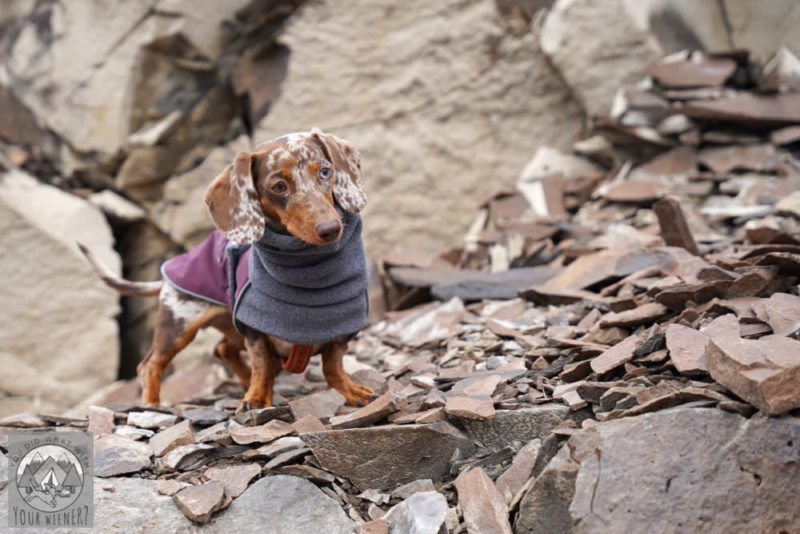
Dog and Leash Laws by Land Ownership
Part of the reason finding trails where your dog can hike off leash is so challenging is that the general rules above often come with exceptions.
Below are the specific rules for each land management type, along with any exceptions I could find or know about.
Incorporated Cities
I couldn’t possibly check the rules of every city in Washington State to verify but every municipal code I know of requires dogs within city limits to be leashed when not contained on personal property.
This includes hiking and walking trails that are within City limits.
King County Parks
Dogs must be leashed on all King County trails, including Cougar Mountain Regional Park and Soaring Eagle Park, unless inside the boundaries of a designated off-leash area (Off leash dog park, few have significant hiking trails).
A violation of the leash law can result in a monetary fine of up to $500.
Washington State Parks
Dogs are welcome at state parks but must always be on a leash and are not allowed at swimming beaches (most of them are considered swimming beaches).
Bureau Of Land Management (BLM)
Leashes are not required on most trails but you must keep your dog close and under voice control.
Some of the trails definitely require leashes though because the BLM website says, “please check the trail website or call the local BLM field office for specific leash policies.”
Washington State Department of Natural Resources (DNR)
Most Washington State DNR trails, including Mount Si and Tiger Mountain, require that dogs be on a leash.
Washington Department of Fish and Wildlife (WDFW)
The rules on WDFW land can really vary based on protected wildlife and hunting seasons. So much that it’s difficult to draw any generalizations from the rules.
The WDFW website says, “With the exception of licensed service animals for persons with disabilities, pets may be prohibited or regulated.”
If you do find a trail on WDFW where dogs are allowed, they must be learned rom April through July.
National Parks (NPS)
While dogs are allowed inside National Parks, they are restricted to developed areas such as parking lots, campgrounds, and roads.
Note: If you do plan to take your dog to one, you’ll want to read my tips for having fun in a National Park with your dog.
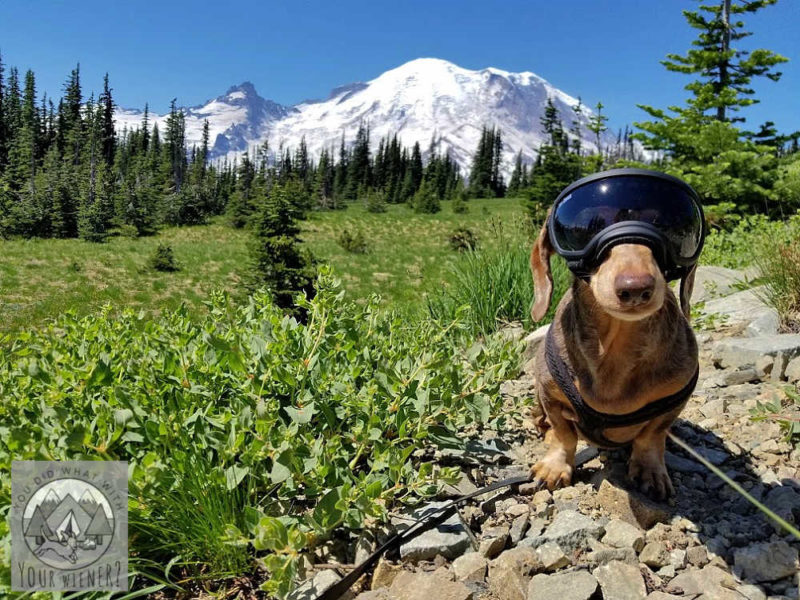
With very few exceptions, like portions of the Pacific Crest Trail within the park boundary, and the Spruce Railroad Trail in Olympic National Park, dogs are not allowed on trails.
They are not allowed off leash in any areas within the national park.
National Forests (USFS)
Dogs are generally permitted to hike on U.S. Forest Service trails. They are allowed off leash on most of these trails.
Exceptions are most trails within designated wilderness areas. For example, most of the area north of I-90 and south of Highway 2, and west of Stevens Pass, is a wilderness area and dogs are required to be on a leash.
There are a few wilderness areas where dogs are not allowed at all, like the Enchantments area and Ingalls Lake Trail near Leavenworth.
Here are few popular National Forest Service trails where dogs are NOT allowed to be off leash:
- Snow Lake Trail 1013
- Granite Mountain Trail 1016
- Ira Spring – Mason Lake Trail 1038
- Melakwa Lake Trail 1011
- Denny Creek Trail 1014
- Pratt Lake Trail 1007
- Pacific Crest Trail 2000
- West Fork Foss Trail 1064
- Necklace Valley Trail 1062
For more trails within the Mt. Baker-Snoqualmie National Forest where dogs are required to be on leash, check out this page.
I couldn’t find a similar list for the Oakanogan-Wenatchee National Forest but will keep looking.
However, ther website says, “Dogs are allowed on most trails but must be on leash on certain trails, and under control at all times.”
I assume – and, yes, it is an assumption based on my experience working with the Forest Service and the fact that most Forest Service land rules are the same or very similar – that dogs are also allowed off leash in the Oakanogan-Wenatchee National Forest unless the posted rules say otherwise or the trails are within a designated wilderness area.
Please also remember dogs are prohibited in the Enchantment Permit Area and Ingalls Lake area of Alpine Lakes Wilderness, except for Service Dogs as defined by Department of Justice regulations 28 C.F.R. Part 35.136.
If the trail you want to hike is not on this list, you are allowed to hike with your dog off leash (unless rules change, which I am not in control of).
For more information about leash Laws on USFS managed lands, please read this article on Dogs in the National Forest.
How Do I Know Who Manages the Trail I Want to Hike?
Knowing the rules regarding dogs of leash is all well and good but you need to know who manages the land you are hiking on before you can apply them.
Ideally, you can find out this information before you go so you know whether your dog will be able to enjoy some freedom off leash or not.
If you search the trail you want to hike on the Washington Trails Association website and scroll down to the “getting there” section under the map, they list who has jurisdiction over that trail (the bonus is they also tell you what parking pass you will need).
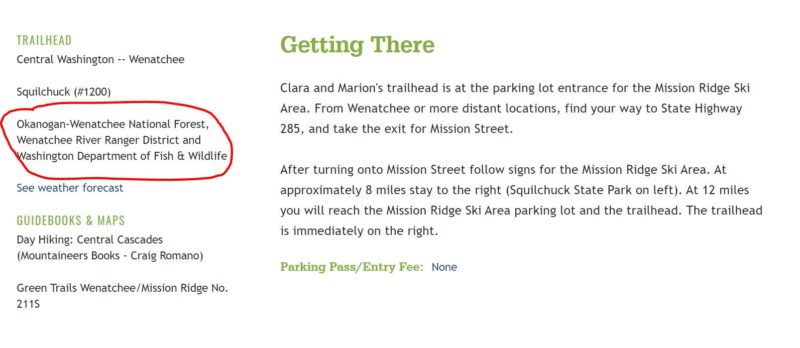
This is usually the first place I look if I am unsure because it is clearly stated and accurate.
If you want a pretty close guess, you can look up the trailhead on Google maps, or on AllTrails, and zoom out until the smaller map features disappear and the big, green patches and land area names appear.
This works best for Federal or State managed lands. It’s not so handy for city and county trails.
Even then, you have to guesstimate where the boundaries of each land use type is.
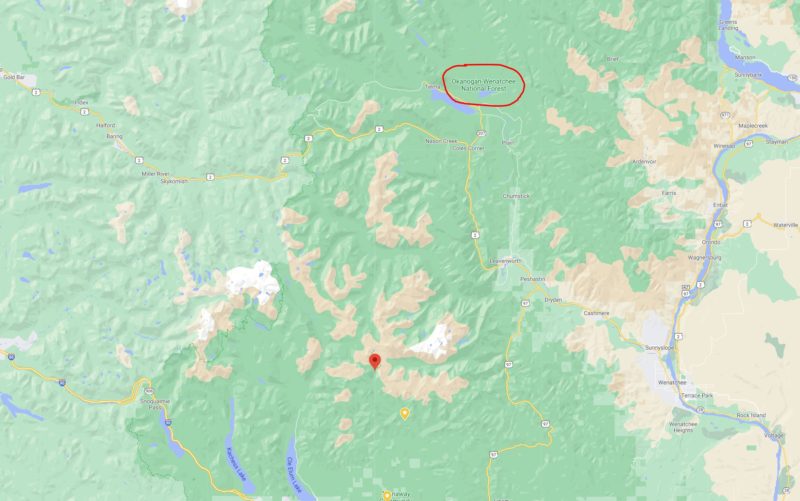
If you want a very detailed map of different land use areas, you can pay to download the onX Hunt app for Washington State (other states are available too) to get a detailed map of public and private boundaries, including landowner names.
Final Thoughts
The rules can be very confusing. If you’re unsure whether or not your dog should be on-leash, your best bet is to err on the side of caution and hike with him or her leashed.
Sometimes, despite my best attempt to clear the leash laws up in this article, you may arrive at a trailhead expecting that your dog can hike off leash only to find a sign stating otherwise. Always have a contingency plan.
A contingency plan could be as easy as leashing your dog and heading out or you could head to a “Plan B” trail where you know you can hike with your dog off leash.
Do keep in mind that just because a trail allows dogs to be off leash, that won’t stop people from getting mad and yelling at you.
You might get confronted if you allow your dog to run up to another dog, leashed or not, without asking first.
You may also get yelled at by people who don’t know the rules and think that leashes are required on the trail they are hiking or everywhere in the state.
FYI: I’ve found people to be less uptight about dogs being off leash in eastern washington and Bellingham/Mount Baker area.
Also keep in mind that, on busy trails, dogs should probably be on leash out of courtesy whether officially allowed or not.
As long as your dog has perfect recall, you and your dog follow common etiquette practices, and you know the trail you are hiking on allows dogs to be off leash, you and your dog can enjoy some freedom on the trails.
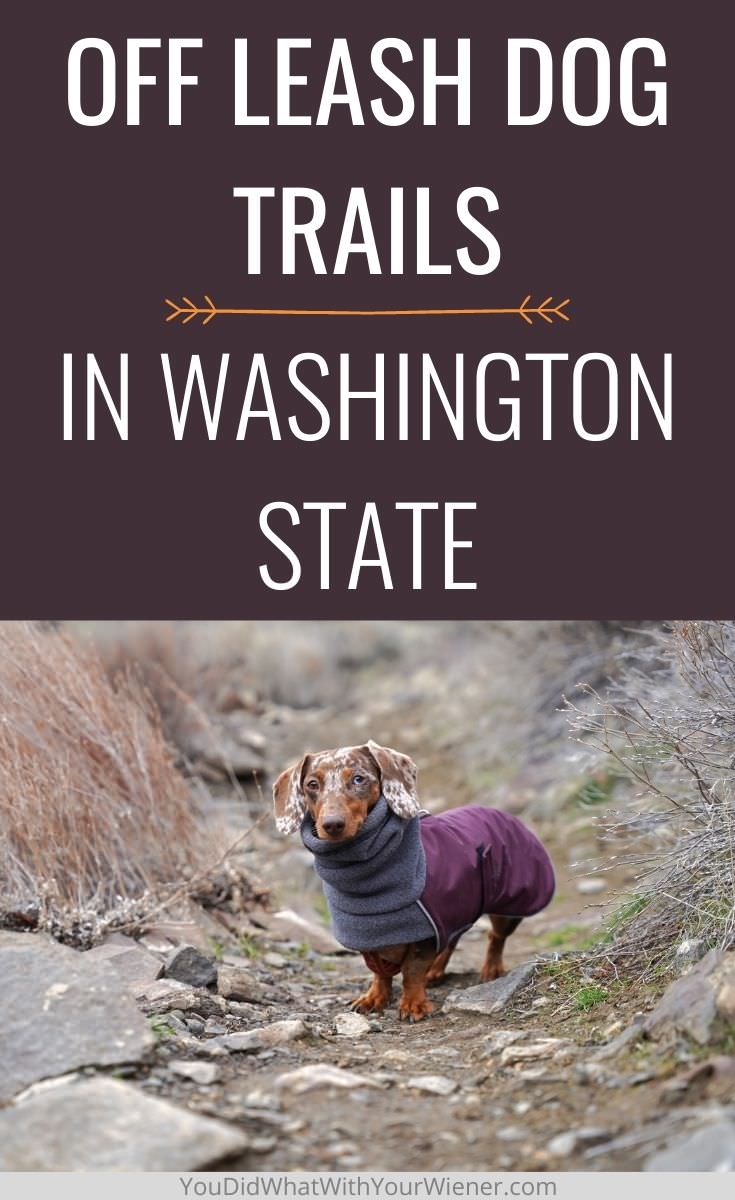

About the Author
Hi, I’m Jessica. I’ve been studying the Dachshund breed since 2007, owned 3 of my own, and shared in the lives of thousands of others through their owner’s stories. When I’m not sharing what I know on this blog, you can find me hiking, camping, and traveling with my adventurous wiener dogs.

Thanks, Jessica – this is really helpful. Thanks for doing all that research and compiling; it’s great to have it all in one place. We live in Idaho, and a lot of what you listed applies to our state too.
Thanks for reading. Yes! This information does apply to Idaho. Most of the west actually, although California has some rules that differ (mostly State Parks and specific wilderness areas).
This makes me wish I lived in Washington!!! I would love to be able to take my dogs for more off leash adventures, but for now, reading about it sure helps! Such a great piece!
Thank you for reading. This information is relevant for for most of the western states (California has some different rules about State Parks but otherwise it should be accurate) so keep it handy if you ever come out this way).
Good and relevant tips for hiking.
Wow, what a thorough and helpful article. I’ll be bookmarking this one! Thanks a bunch.
Glad you found it helpful!
Thanks for doing what you can to inform about off leash options. We have a mini-bernedoodle in Anchorage, Alaska and for the most part we have learned not only to live with wildlife in our neighborhoods but also with off leash dogs in most of our parks, rules or not. People just accept it and you know what, almost every dog is just a friendly, social animal. When they run up to say “hi”, they are just saying “hi”. There are few exceptions these days. We really don’t have to tie dogs to a rope and force them to be antisocial.
I used to be a leash-only person but now I believe there is a time and place for a well-trained dog to walk off leash.
Great article – I would love a list of areas near Spokane that allow dogs off-leash – most of what you listed were areas where you can’t have them off-leash. I lived in Montana and my dog was always off-leash. It’s such a pain to hike and have them pull you the entire time, not to mention no fun for them to not be able to be free and run around. My dog is controlled under voice command and it would be nice to be able to go for a walk without a leash!
Hi Bri. The land manager that is the most likely to allow dogs off leash is the National Forest Service. Fortunately, besides National Parks, it’s one of the largest public landholders in the State of Washington. But, sadly, most of that land is in central and Western Washington. The closest National Forest land to Spokane is the Colville National Forest, located north and northwest of Spokane. My tips for finding land managers of the trails in WA in this article are the same for your area of the state. Wta.org covers almost all trails. Some examples of trails in these areas are trails in the Kettle Crest Trail and Caribou Ridge. Stevens Laked just across the border in Idaho (but listed on WTA because the trailhead is on the WA side it seems) looks nice too. Since National Forest Lands are, well, national, the same off leash rules should apply in other states too (like Idaho). One thing I will note, WTA and AllTrails default to “dogs allowed but on leash” to be conservative. If the trails are on National Forest Land, and there is not a sign at the trailhead specifically saying dogs must be on leash, or you are not in a specially designated wilderness area, it’s almost certain that dogs are allowed off leash there. I hope that helps. My knowledge of the Spokane area is limited. If I lived there, I would probably do most of my hiking in Idaho.